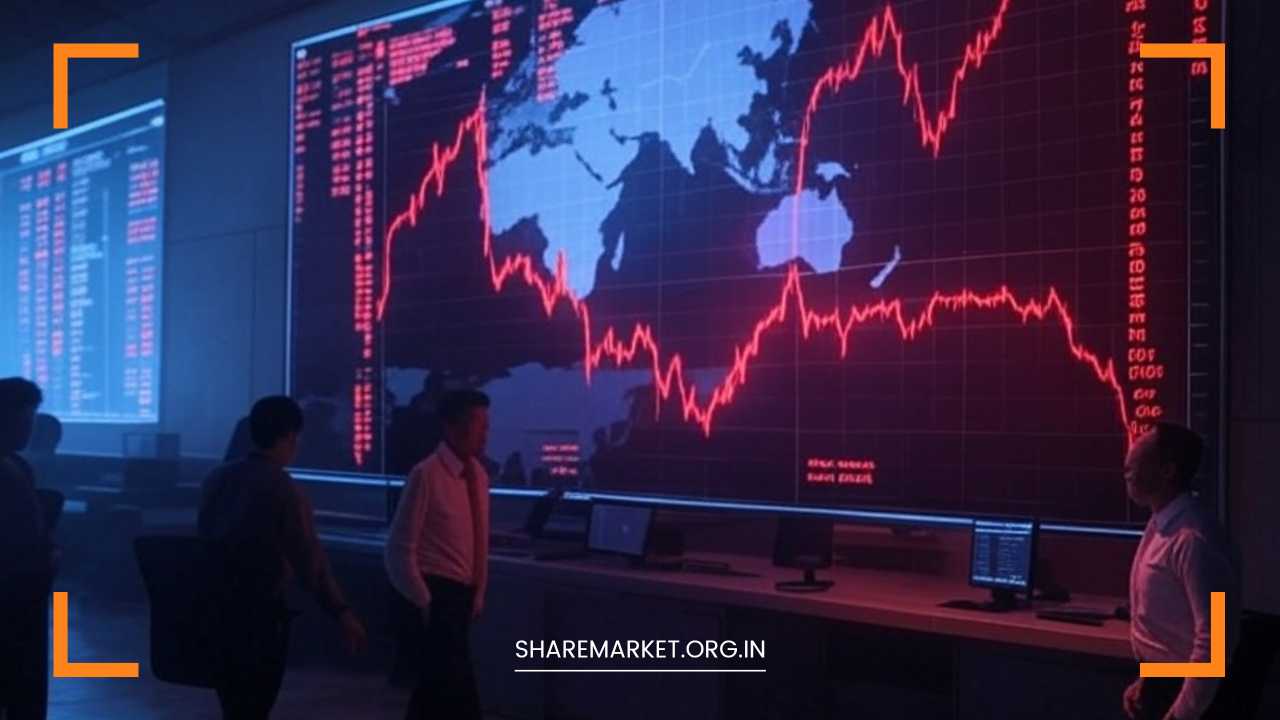Stock Market Crash: Rs 13.4 Lakh Crores Lost as Sensex Plunges 2,226 Points on April 7, 2025

Stock Market Crash
Stock Market Crash: ₹13.4 Lakh Crores Lost in a Single Day as Sensex Plummets by 2,200 Points, 543 Stocks Hit Lower Circuit
Stock Market Update: The Indian stock market faced a brutal blow on April 7, 2025, as it witnessed one of the sharpest declines in recent memory, with a colossal loss of ₹13.4 lakh crores in just one trading session.
The total market capitalization of companies listed on the Bombay Stock Exchange (BSE) dropped to ₹389.92 lakh crores, a drastic fall from ₹403.34 lakh crores at the close of the previous trading day on April 4, 2025.
The turmoil was triggered by a combination of global economic factors, primarily the escalating trade tensions between the United States and China, which created widespread panic in global financial markets.
Global Factors Behind the Crash
The root cause of today’s dramatic market meltdown can be traced back to an intensifying global trade conflict, particularly between the US and China. Former US President Donald Trump made a controversial announcement of new tariffs on Chinese goods, signaling a potential escalation in the ongoing trade war.
In retaliation, China imposed its own set of tariffs on US products, further deepening the economic standoff.
The market reacted sharply to this development, with investors fearing the implications of a full-blown global trade war that could hurt international trade and economic growth.
Additionally, growing concerns about a potential recession in the United States added fuel to the fire. Economic indicators from the US, including slowing GDP growth and rising unemployment rates, have raised fears that the world’s largest economy could be headed for a downturn.
The combination of trade tensions and the risk of a US recession sent shockwaves through global financial markets, and Indian markets were not immune to this volatility.
Impact on the Indian Stock Market
The Sensex, the flagship index of the BSE, closed at 73,137.90, plummeting by 2,226.79 points, or a significant 2.95%.
This drop represents one of the steepest declines the index has experienced in recent years. The Nifty 50, another key benchmark index, also took a heavy hit, ending the day at 22,161.60, down by 742.85 points, or 3.24%.
This catastrophic drop in both major indices wiped out an estimated ₹13.5 lakh crore of wealth from investors’ portfolios.
The broader market reflected similar turmoil, with both small and midcap stocks bearing the brunt of the sell-off.
The BSE Midcap Index fell by 3.46%, while the BSE Smallcap Index experienced an even sharper decline of 4.16%. This reflected widespread panic across all segments of the market, from blue-chip stocks to smaller, more volatile companies.
Sectoral Breakdown and Key Contributors to the Crash
The bloodbath was not confined to a few sectors but was felt across the entire market. Every single sectoral index closed in the red, with the metal, realty, IT, and capital goods sectors among the hardest hit.
- Metal Sector: The metal sector suffered the most, largely due to concerns over a slowdown in global demand for industrial metals and the risk of disruptions in global supply chains. The steepest losses were seen in the shares of Tata Steel, which plummeted by 7.73%, followed by other major players like JSW Steel. The combination of tariff barriers, reduced demand, and uncertainty surrounding the global economy severely impacted the stock prices of metal companies.
- Realty Sector: The real estate sector also faced a severe beating, with property developers seeing sharp declines. DLF, Oberoi Realty, and Godrej Properties were among the top losers in this sector. The sharp drop in real estate stocks can be attributed to investor concerns regarding rising interest rates and a potential slowdown in housing demand, which could be exacerbated by the broader economic downturn.
- Information Technology (IT) Sector: IT stocks also witnessed significant losses, with Infosys, TCS, and Wipro among the top decliners. As fears of a US recession spread, there was heightened concern that demand for IT services could weaken, especially from global clients based in the US and Europe. Additionally, currency fluctuations due to trade tensions further added to the volatility faced by IT companies.
- Capital Goods Sector: The capital goods sector, which includes companies involved in infrastructure development and manufacturing, also bore the brunt of the sell-off. Larsen & Toubro (L&T), a major player in this sector, saw its stock fall by 3.75%. The decline was attributed to both global economic uncertainty and concerns over delayed infrastructure projects.
Broad Market Performance: Investor Wealth Decimated
The extent of the market’s downturn was evident in the broader market performance. Out of the 4,225 stocks traded on the BSE, a staggering 3,505 stocks ended the day in the red, reflecting the widespread nature of the sell-off.
Only 576 stocks managed to register gains, while 144 stocks closed flat, showing no significant movement.
The remaining stocks were dominated by sharp declines, with a total of 775 stocks hitting their 52-week lows during the day’s trading session, a clear indicator of the deep pessimism in the market.
The steep losses were felt across all investor categories, with retail, institutional, and foreign investors all taking a hit.
Small-cap investors, in particular, suffered heavy losses as the BSE Smallcap Index plummeted, exacerbating the pain felt by individual investors with high exposure to these more volatile stocks.
The Fallout: A Look at Key Stocks
The magnitude of today’s crash was underscored by the performance of Tata Steel, which saw its shares drop by 7.73%, marking one of the steepest declines among large-cap stocks.
Other major stocks, including Tata Motors, Infosys, and Kotak Mahindra Bank, also saw significant losses, with declines ranging from 3.75% to 5.78%.
The fact that all 30 Sensex stocks closed in the red was an unusual occurrence, highlighting the severity of the market’s reaction.
The decline was so sharp that, by the end of the day’s trading, all 30 stocks in the Sensex index had fallen.
This marked the first time in several years that such an event had occurred, demonstrating the extent of the sell-off and investor panic.
Final Remarks: What Lies Ahead for Indian Markets?
Today’s stock market crash serves as a stark reminder of the volatility and risks inherent in the global economy.
With escalating trade tensions, a potential recession in the US, and rising fears of global economic slowdown, the market’s outlook remains uncertain in the short to medium term.
While Indian markets have historically shown resilience in the face of global challenges, the current volatility underscores the need for caution.
Investors are advised to closely monitor global economic developments, particularly in relation to trade wars and the health of the US economy.
Until these factors stabilize, the Indian stock market may continue to face heightened risks. However, for long-term investors, periods of market correction can also present opportunities for strategic investments, especially in undervalued stocks.
For now, the focus remains on navigating the choppy waters of global uncertainty, with the hope that, eventually, calmer seas will return.

















